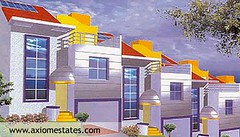The Indian real estate market experienced an unprecedented surge in 2023, outperforming all expectations and setting new records. Buyers are increasingly prioritizing homeownership over rental arrangements.
As we navigate recent times, the Indian residential real estate market has emerged as a beacon of security for investors, allowing the housing market to shine for those seeking stability and growth. In 2023, the Indian real estate market experienced an unprecedented surge, far exceeding expectations and setting new records. Buyers are increasingly prioritizing homeownership over rental arrangements.
It is expected to have a promising 2024 as the month progresses, and in India’s ever-changing investment landscape, residential real estate stands out as a pillar of strength and dependability. What is the situation in 2024? As we navigate through recent times, the Indian residential real estate market is emerging as a beacon of security for investors, making the housing market shine for those seeking stability and growth. The Indian real estate market witnessed an unprecedented surge in 2023, surpassing all expectations and setting new records. Buyers are now placing a greater emphasis on owning a home rather than opting for rental arrangements.
It is expected to have a promising 2024 as the months go by, and in the ever-evolving landscape of investment opportunities, residential real estate in India stands tall as a pillar of strength and reliability. What is the situation in 2024? All factors indicate that it is a safe investment compared to other asset classes.
Residential real estate is resilient
Despite the challenges posed by the global financial crisis in recent years, India’s residential real estate sector has proven remarkably resilient. Early indications suggest that 2024 will be a promising year for the industry, with increased demand, particularly in urban areas with high development and infrastructure trends. India is positioned at the forefront, and this growth has been attributed to strong economic indicators and consistent demand, creating a positive sentiment among key contributors.
Affordability and Availability of Luxury Homes
Indian homebuyers have become more aspirational, seeking to live a luxurious lifestyle. According to a study, residential real estate will remain affordable while increasing threefold by 2024. The real estate sector has grown steadily due to continued urbanization, rental market expansion, and price appreciation. The repo rate cut is expected to be within the normal range, allowing home prices to remain affordable for buyers for an extended period. Metro cities like Bangalore would see affordable luxury, while people could purchase homes regularly.
Urbanization and increased affordability.
The Indian real estate sector is undergoing significant transformation, owing largely to the explosive growth of the country’s middle class and rapid urbanization, which is driving demand for affordable luxury housing in tier-1 cities. This segment is the foundation of India’s real estate market and is expected to grow further. The rise in incomes and demand for housing in urban areas has resulted in a massive urbanization process, which is the primary cause of urban India’s growth.
Breakthrough performance
The real estate market has been the primary driver of India’s growth story. Not only was the country’s economy the fastest growing, but real estate indicators were also at record highs. In retrospect, 2023 began with global inflation that threatened a full-fledged recession. Despite rising inflation, the real estate market performed well this year. A strong finish was seen across the cities, with Bengaluru leading the pack. The figures were unimaginable in the past, indicating strong expansion-driven growth.
A thriving outlook.
As the market prepares for a significant leap this year, there is an increase in demand for residential properties. It has become clear that property markets in India have grown significantly, with an increase in new launches and property sales. Fueled by overwhelmingly high sales and a thriving luxury segment, this instills confidence in developers, driving a supply pipeline and establishing major metropolitan cities as rapid real estate consumers. This promotes economic growth, stable interest rates, and a shift in public perception of property ownership, resulting in property ownership serving as a financial safety net.
The Indian real estate sector, which is central to the economy and supports a variety of industries, is poised for continued growth. A strong economy, urbanization, rising incomes, government initiatives, and increased demand for various properties indicate a bright future. With a promising outlook, it remains one of the most secure assets for investors to hold in the future.

